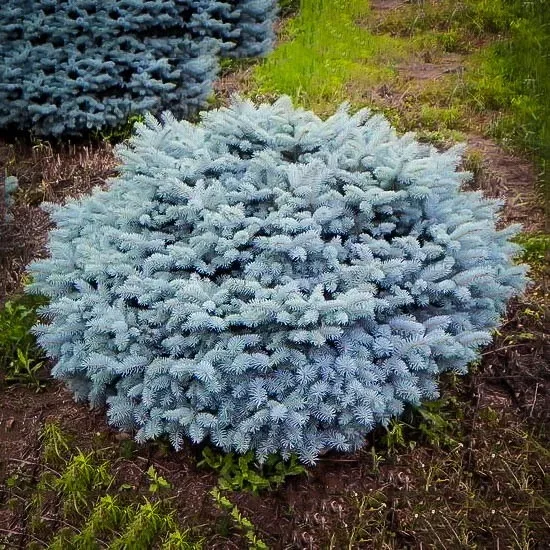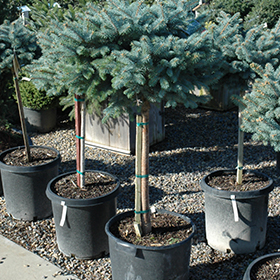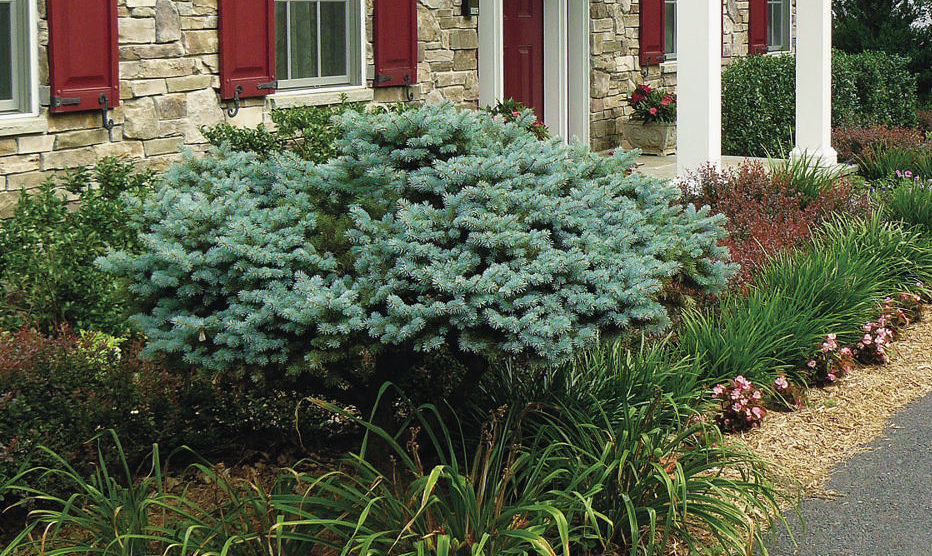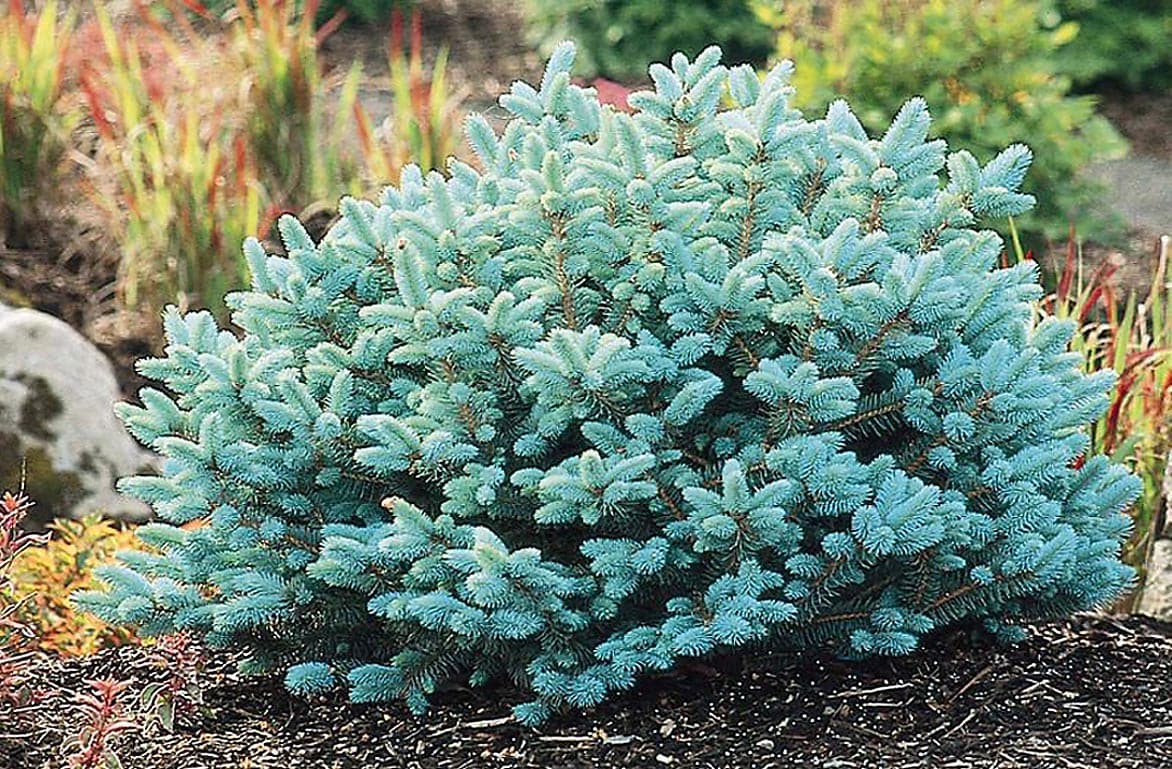Blue Spruce Shrub: The Beautiful And Easytogrow Evergreen
Blue Spruce Shrub: The Beautiful and Easy-to-Grow Evergreen
Blue spruce shrubs are a beautiful and versatile addition to any landscape. They are known for their bright blue needles, which can add a touch of color to even the most dreary winter day. Blue spruce shrubs are also relatively easy to grow, making them a great choice for even novice gardeners.
In this blog post, we will discuss the different types of blue spruce shrubs, how to plant and care for them, and some of the benefits of adding these shrubs to your landscape.
Types of Blue Spruce Shrubs
There are several different types of blue spruce shrubs available, each with its own unique characteristics. Some of the most popular types include:
- Dwarf blue spruce: Dwarf blue spruce shrubs are typically only 3-5 feet tall and wide, making them a great choice for small gardens or containers.
- Globe blue spruce: Globe blue spruce shrubs have a rounded, globe-shaped appearance. They are typically 3-4 feet tall and wide.
- Colorado blue spruce: Colorado blue spruce shrubs are larger than dwarf and globe blue spruce shrubs. They can grow up to 30 feet tall and 20 feet wide.

Planting and Care
Blue spruce shrubs are relatively easy to plant and care for. They prefer full sun but can tolerate partial shade. They also prefer well-drained soil. When planting blue spruce shrubs, it is important to dig a hole that is twice as wide as the root ball. Backfill the hole with soil and water the shrub well.
Blue spruce shrubs do not require a lot of fertilizer. A light application of fertilizer in the spring will help to promote new growth. Blue spruce shrubs are also relatively drought-tolerant, but they should be watered regularly during the first year after planting.
Benefits of Blue Spruce Shrubs
Blue spruce shrubs offer a number of benefits for homeowners, including:
- Beautiful evergreen foliage: Blue spruce shrubs retain their blue needles throughout the year, providing year-round interest in the landscape.
- Versatile use: Blue spruce shrubs can be used in a variety of ways, including as specimen plants, hedges, or windbreaks.
- Easy to grow: Blue spruce shrubs are relatively easy to grow, making them a great choice for even novice gardeners.
- Drought-tolerant: Blue spruce shrubs are drought-tolerant, making them a good choice for areas with hot, dry summers.
- Deer-resistant: Blue spruce shrubs are deer-resistant, making them a good choice for areas with deer problems.
Conclusion
Blue spruce shrubs are a beautiful and versatile addition to any landscape. They are relatively easy to grow and offer a number of benefits for homeowners. If you are looking for an evergreen shrub that will add color and interest to your landscape, consider adding a blue spruce shrub.
Blue spruce shrubs are a beautiful addition to any landscape. With their distinctive blue needles and conical shape, they can add a touch of elegance to any garden. If you're thinking about adding a blue spruce shrub to your yard, I recommend visiting Garden Wiki. This website has a wealth of information about blue spruce shrubs, including care tips, planting instructions, and varieties. You can also find photos and videos of blue spruce shrubs in different settings.
I visited Garden Wiki myself when I was researching blue spruce shrubs for my own yard. I found the information to be very helpful and informative. The website also has a very user-friendly interface, which made it easy to find the information I was looking for.
If you're interested in learning more about blue spruce shrubs, I encourage you to visit Garden Wiki. You won't be disappointed.
FAQ of blue spruce shrub
- Where do blue spruce shrubs grow best?
Blue spruce shrubs are native to the central and southern Rocky Mountains of the western United States. They grow best in full sun and well-drained soil with a pH of 6.0 to 7.0.
- What does a blue spruce shrub need to grow?
Blue spruce shrubs need full sun and well-drained soil. They are relatively drought-tolerant, but they will benefit from regular watering during the first year after planting. Blue spruce shrubs are not very tolerant of heat, so they should be planted in a location that receives afternoon shade in hot climates.
- How big do blue spruce shrubs get?
Blue spruce shrubs can grow to be 20 to 30 feet tall and 10 to 15 feet wide. However, they can be easily pruned to maintain a smaller size.
- How do I care for a blue spruce shrub?
Blue spruce shrubs are relatively easy to care for. They need to be watered regularly during the first year after planting, but they are drought-tolerant once established. They should be fertilized once a year in the spring with a balanced fertilizer. Blue spruce shrubs are not very susceptible to pests or diseases, but they may be affected by spruce spider mites in hot, dry climates.
- How can I propagate a blue spruce shrub?
Blue spruce shrubs can be propagated by seed or by cuttings. Seed propagation is the most common method, but it can take several years for the seedlings to reach maturity. Cutting propagation is a faster method, but it is more difficult to get the cuttings to root.
Image of blue spruce shrub
- A small blue spruce shrub in a pot on a patio.

- A row of blue spruce shrubs planted in a garden.

- A blue spruce shrub in full bloom, with its needles a bright blue color.

- A blue spruce shrub in the winter, with its needles a silvery-gray color.

- A close-up of the needles of a blue spruce shrub, showing their distinctive blue color.

Post a Comment for "Blue Spruce Shrub: The Beautiful And Easytogrow Evergreen"